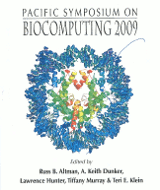Dense Graphlet Statistics of Protein Interaction and Random Networks
R. Colak, F. Hormozdiari, F. Moser, A. Schonhuth, J. Holman, M. Ester and S.C. Sahinalp
School of Computing Science, Simon Fraser University
Email: cenk@cs.sfu.ca
Pacific Symposium on Biocomputing 14:178-189(2009)

Abstract
Understanding evolutionary dynamics from a systemic point of view crucially depends on knowledge about how evolution affects size and structure of the organisms' functional building blocks (modules). It has been recently reported that statistics over sparse PPI graphlets can robustly monitor such evolutionary changes. However, there is abundant evidence that in PPI networks modules can be identified with highly interconnected (dense) and/or bipartite subgraphs. We count such dense graphlets in PPI networks by employing recently developed search strategies that render related inference problems tractable. We demonstrate that corresponding counting statistics differ significantly between prokaryotes and eukaryotes as well as between "real" PPI networks and scale free network emulators. We also prove that another class of emulators, the low-dimensional geometric random graphs (GRGs) cannot contain a specific type of motifs, complete bipartite graphs, which are abundant in PPI networks.
[Full-Text PDF] [PSB Home Page]